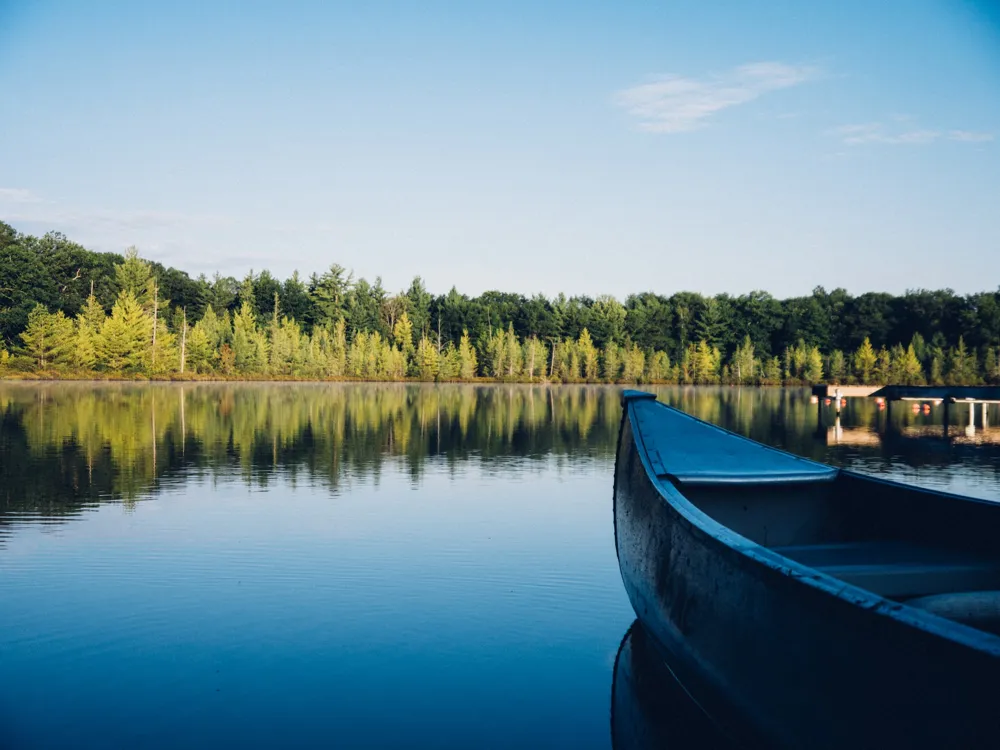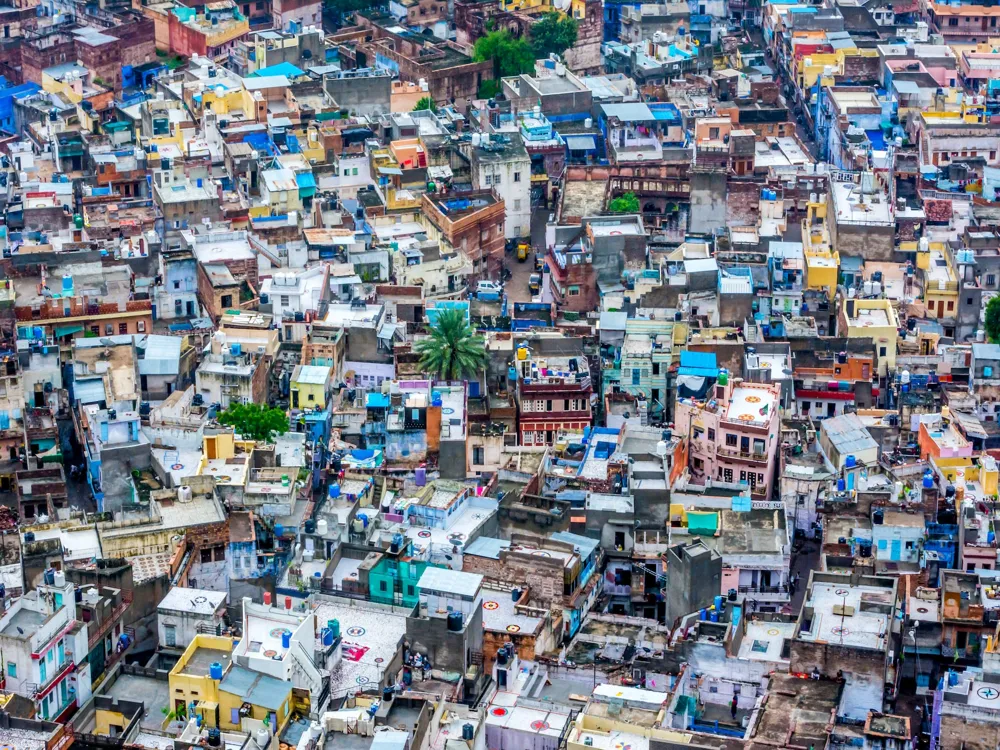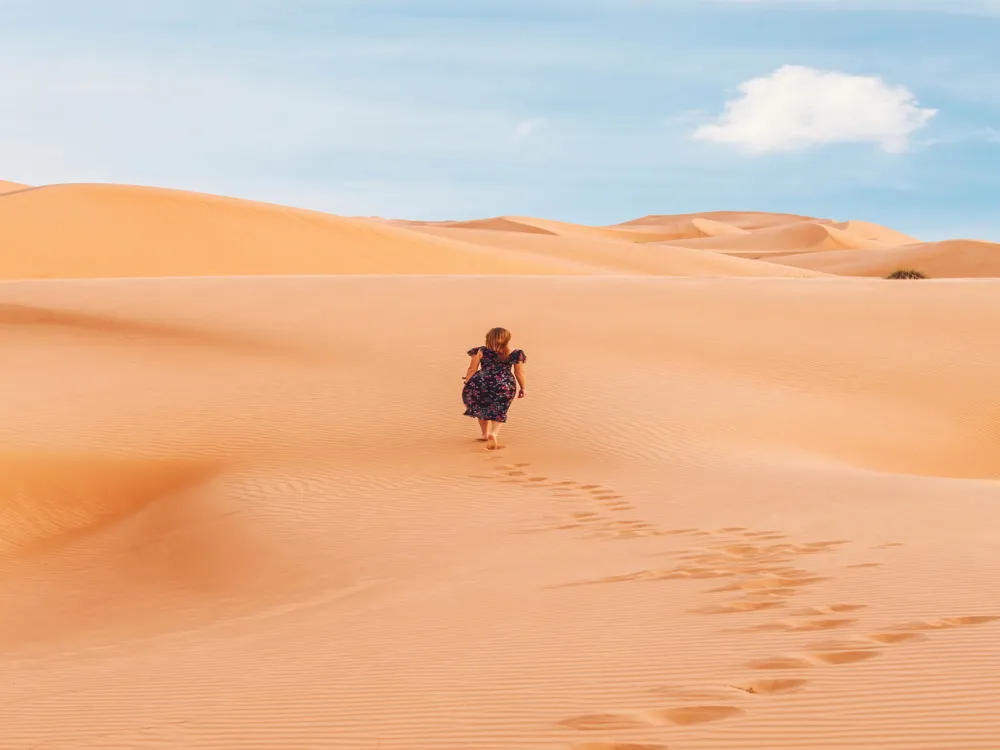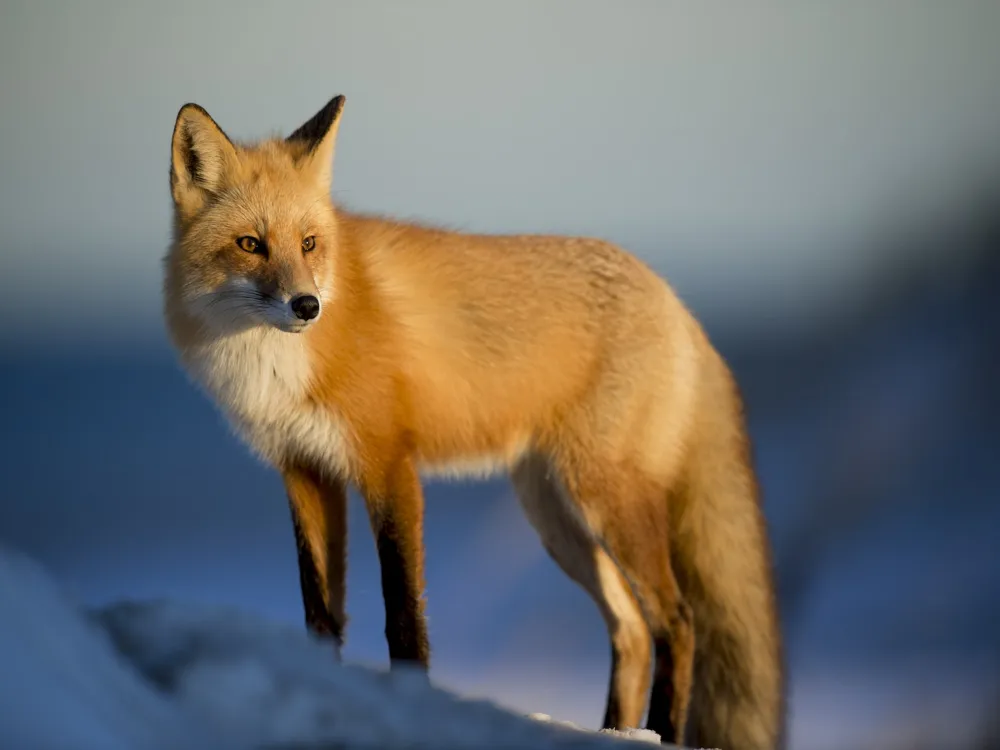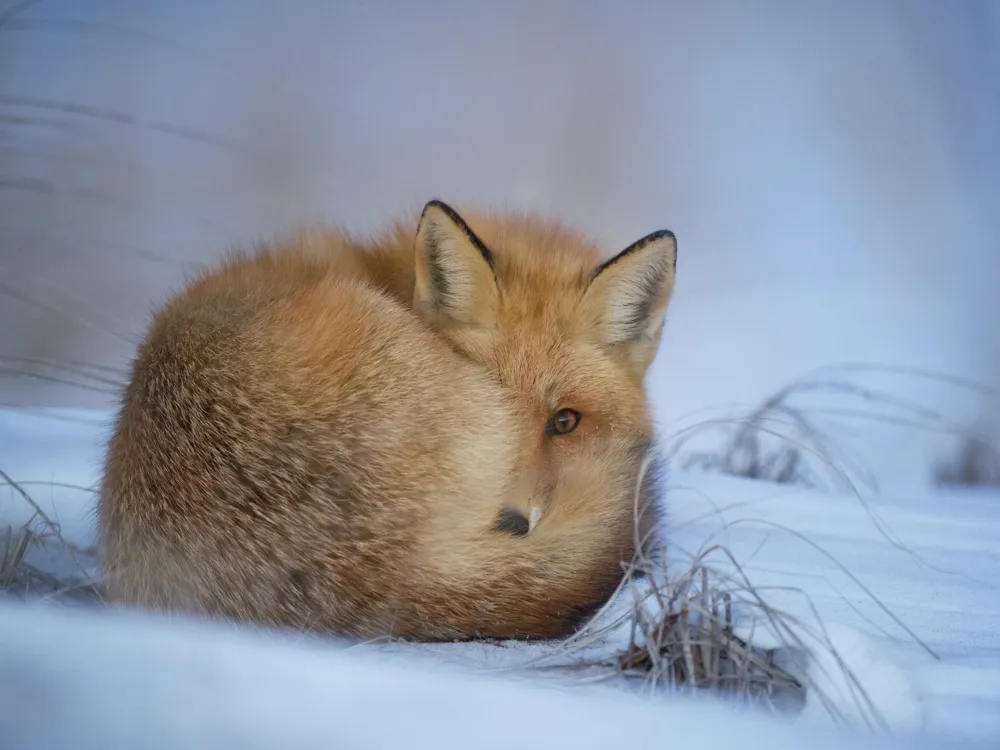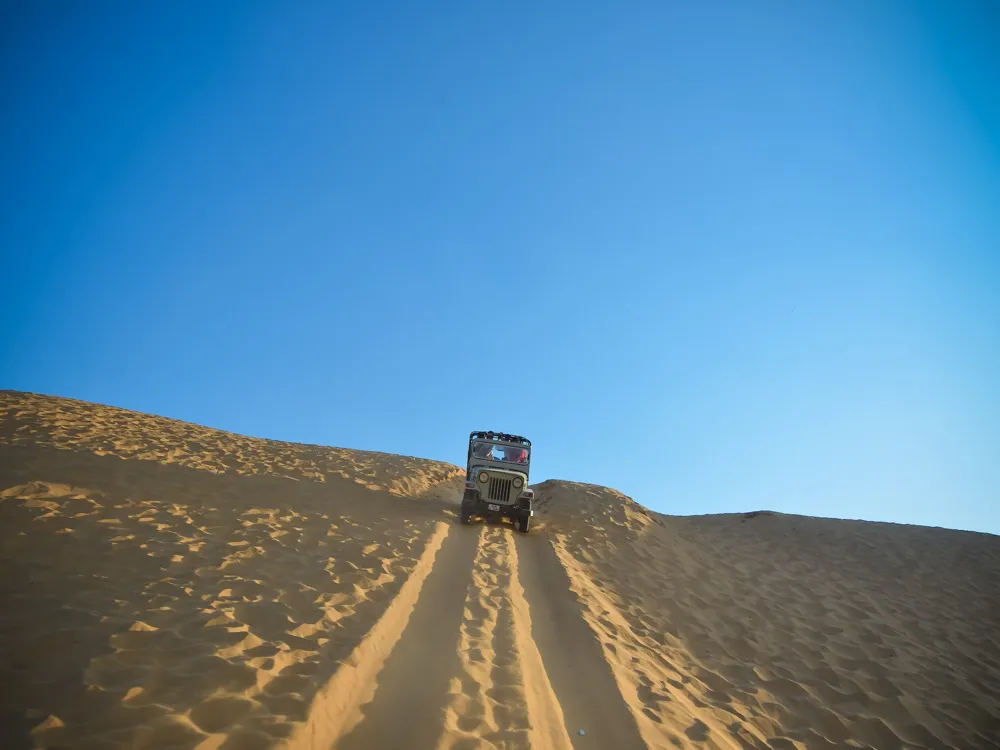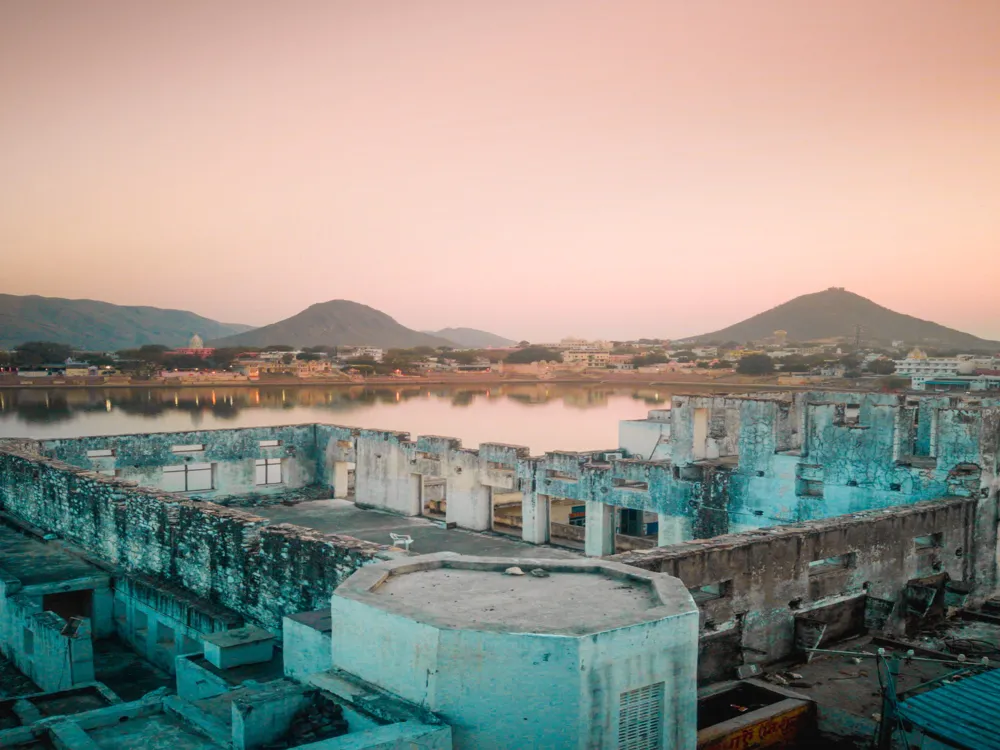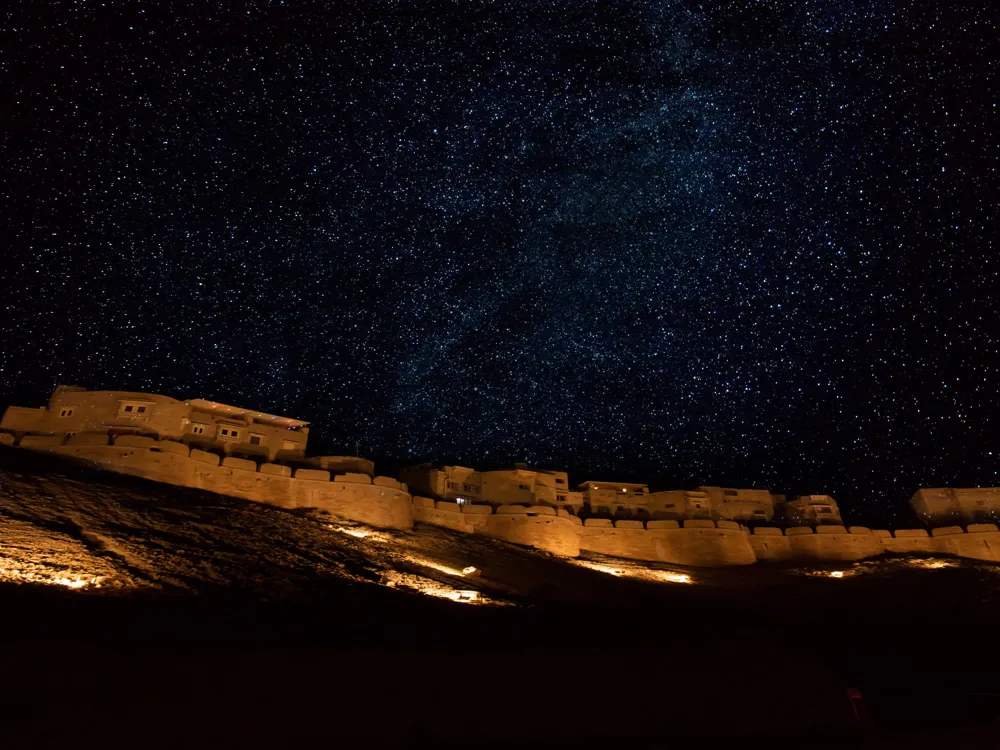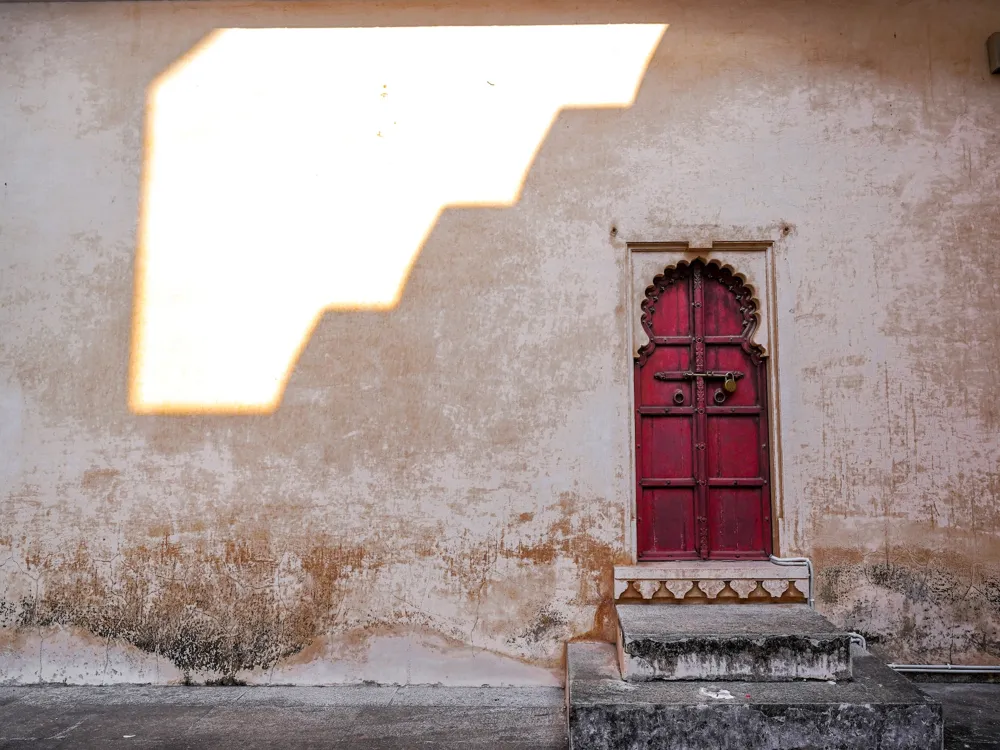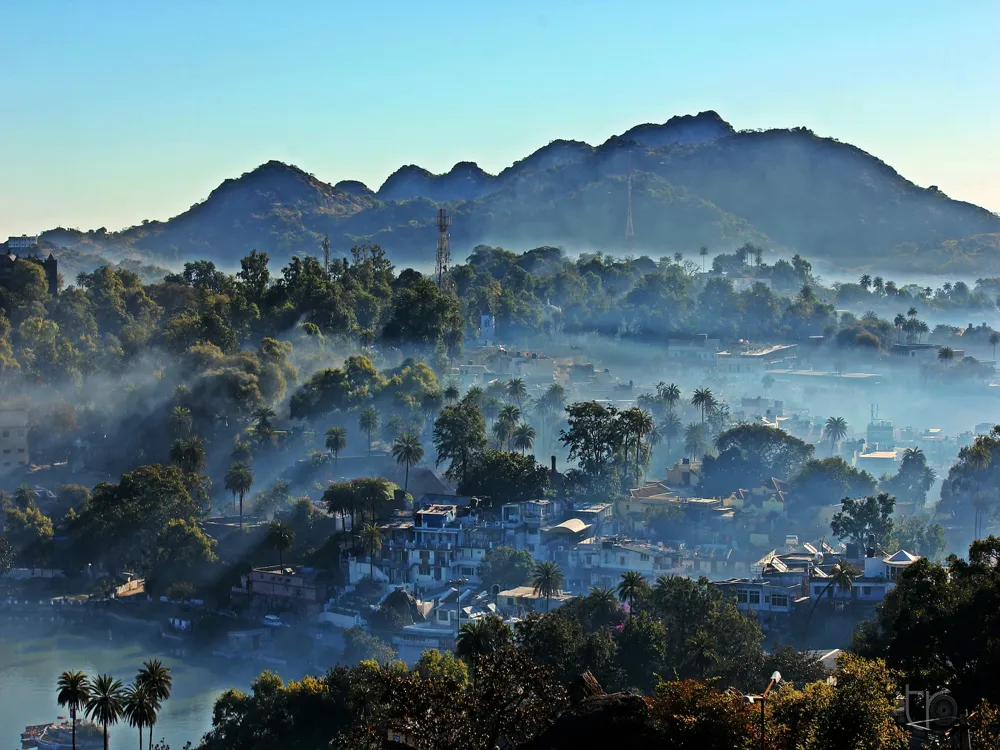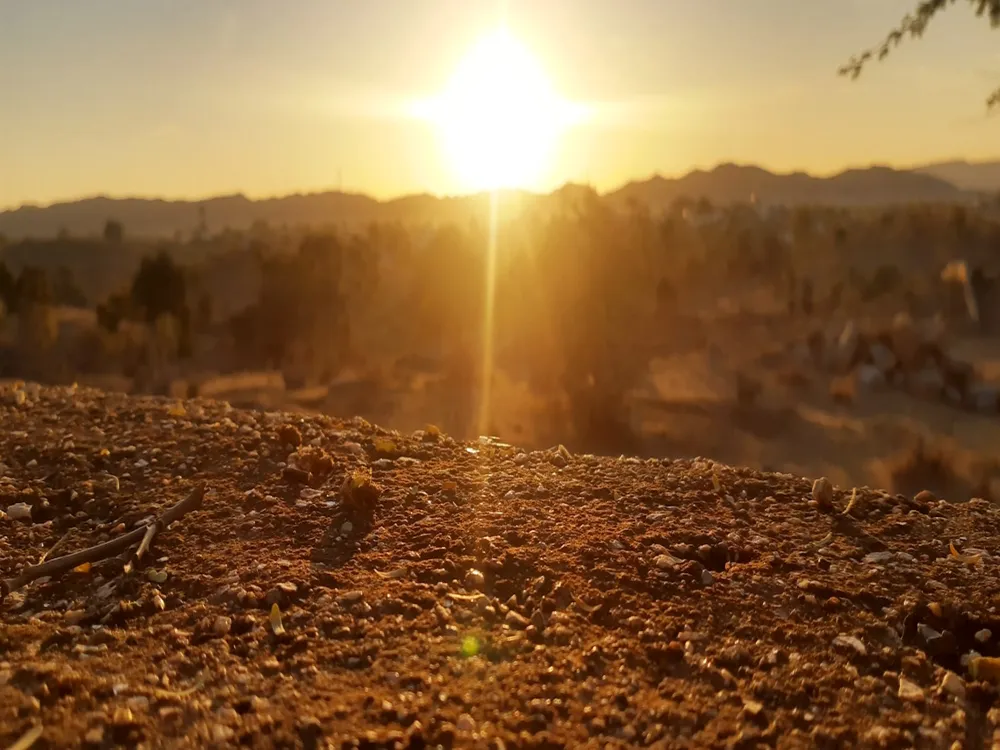Kaylana Lake, a picturesque man-made lake located on the west of Jodhpur in Rajasthan, India, is a quintessential example of historical ingenuity and natural beauty. Spanning over an area of approximately 84 square kilometers, this lake is an oasis in the arid land of Rajasthan. It was constructed in 1872 by Pratap Singh, the then ruler of Jodhpur, as a means to supply water to the city. The lake is enveloped by igneous rock landforms, giving it a unique rugged charm that contrasts beautifully with the serene waters. The history of Kaylana Lake is as intriguing as its landscape. It is said to be built over two palaces and a village, which were submerged to create the reservoir. This deep historical connection adds an element of mystery and allure to the lake, making it a captivating destination for history enthusiasts. The lake is fed by the Hati Nehar (Elephant Canal), which is connected to the Indira Gandhi Canal. The intricate canal system is a marvel of historical engineering, showcasing the advanced understanding of water management by the rulers of that era. Kaylana Lake is not only a historical site but also an ecological haven. It is home to a variety of bird species, making it a popular spot for birdwatching. The lake's surroundings are rich in biodiversity, including several types of flora and fauna. The lush greenery around the lake creates a tranquil environment, ideal for nature lovers and those seeking a peaceful retreat from the bustling city life. Moreover, the lake offers a spectacular view of the sunset, which is a must-see for visitors. The reflection of the setting sun on the lake's surface, accompanied by the scenic backdrop of the rocky terrain, presents an awe-inspiring sight. This natural spectacle makes Kaylana Lake a popular spot for photographers and nature enthusiasts. The cultural significance of Kaylana Lake is also noteworthy. It is an integral part of the local community's lifestyle and holds a special place in the hearts of the people of Jodhpur. The lake is often the site for local festivals and events, reflecting the rich cultural heritage of Rajasthan. Visitors can experience the vibrant local culture and engage with the friendly residents, adding a unique dimension to their visit. Overall, Kaylana Lake is a gem in the heart of Rajasthan, offering a blend of history, nature, culture, and beauty. Its tranquil waters, rich history, and scenic surroundings make it a must-visit destination for anyone traveling to Jodhpur. The architectural brilliance of Kaylana Lake is a testament to the ingenuity of the bygone era. The creation of this artificial lake required meticulous planning and execution, showcasing the advanced engineering skills of the 19th century. The primary structure of the lake was designed to harness the natural topography of the region, utilizing the rocky landscape to form a natural boundary for the reservoir. The construction involved the strategic placement of rocks and earthen dams to create a robust and efficient water retention system. The lake was designed to be deep enough to store a substantial amount of water, ensuring a steady supply for the city of Jodhpur. The use of local materials and traditional techniques in its construction reflects the sustainable approach of the architects. One of the most notable features of Kaylana Lake is the Hati Nehar (Elephant Canal), which plays a crucial role in its water management system. This canal was engineered to channel water from the Indira Gandhi Canal to the lake, maintaining a consistent water level throughout the year. The design of the canal is a marvel, incorporating aspects of gravity flow and controlled water release to prevent flooding during heavy rains. The architecture of Kaylana Lake also includes elements that enhance its aesthetic appeal. The lake is flanked by stone pavilions and watchtowers, which were historically used for leisure and as vantage points. These structures are adorned with intricate carvings and traditional Rajasthani architectural motifs, adding to the lake's historical and cultural value. Furthermore, the area surrounding the lake was landscaped to create a harmonious blend of natural and man-made elements. The lush gardens and walking paths around the lake provide a picturesque setting for visitors, allowing them to immerse themselves in the beauty of the environment. In conclusion, the architecture of Kaylana Lake is not just functional but also an artistic expression. It exemplifies the harmonious coexistence of human ingenuity and nature, making it an architectural marvel worth exploring. The ideal time to visit Kaylana Lake is from October to March when the weather in Rajasthan is pleasant. During these months, the climate is cooler and more comfortable for outdoor activities. Always prioritize safety, especially near water bodies. Avoid swimming in the lake as it can be dangerous. Also, be cautious while walking along the rocky edges. For birdwatching enthusiasts, bring binoculars and cameras. Early morning or late afternoon are the best times to spot a variety of birds. Maintain the cleanliness of the lake by not littering. Use designated trash bins for waste disposal to help preserve the natural beauty of the area. Combine your visit to Kaylana Lake with nearby attractions such as the Machiya Safari Park and Jaswant Thada for a more enriching experience. Reaching Kaylana Lake is relatively easy, given its proximity to Jodhpur city. The lake is situated about 8 kilometers west of Jodhpur, making it accessible by various modes of transportation. Visitors can opt for local buses, taxis, or auto-rickshaws from different parts of the city. For those driving, there is ample parking space available near the lake. Additionally, for tourists staying in central Jodhpur, hiring a cab for a half-day trip to Kaylana Lake and nearby attractions is a convenient option. The well-connected roads and clear signages make the journey to Kaylana Lake a hassle-free experience. Read More:Overview of Kaylana Lake in Jodhpur, Rajasthan
Architecture of Kaylana Lake
Tips When Visiting Kaylana Lake
Best Time to Visit
Safety Measures
Birdwatching Tips
Respecting the Environment
Exploring Nearby Attractions
How To Reach Kaylana Lake
Kaylana Lake
Jodhpur
Rajasthan
₹ 12,000 onwards
View jodhpur Packages
Weather :
Tags : Lake
Timings : 9:00 AM - 5:00 PM
Time Required : 1 - 2 hrs
Entry Fee : No entry fee
Planning a Trip? Ask Your Question
Jodhpur Travel Packages
View All Packages For Jodhpur
Top Hotel Collections for Jodhpur

Private Pool

Luxury Hotels

5-Star Hotels

Pet Friendly
Top Hotels Near Jodhpur
Other Top Ranking Places In Jodhpur
View All Places To Visit In jodhpur
View jodhpur Packages
Weather :
Tags : Lake
Timings : 9:00 AM - 5:00 PM
Time Required : 1 - 2 hrs
Entry Fee : No entry fee
Planning a Trip? Ask Your Question
Jodhpur Travel Packages
View All Packages For Jodhpur
Top Hotel Collections for Jodhpur

Private Pool

Luxury Hotels

5-Star Hotels

Pet Friendly







